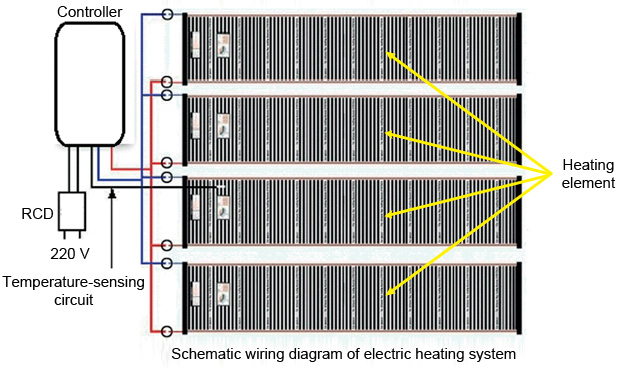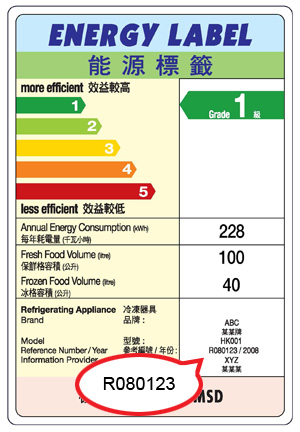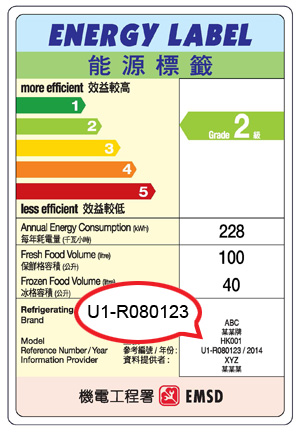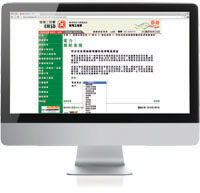Contents
Feature Articles
News-in-brief
Feature Article 1 - Electrical Safety Requirements for Electric Heating System Installed in Building Structures
Hong Kong has been swept by the Korean wave in recent years. Not only are we used to Korean movies, TV drama, music, fashion, beauty and cosmetics and delicacies, but we are also using quite a few electrical products and electrical equipment manufactured in Korea as well. Korean-style sauna bathhouses, called "Hanjeungmak" or "Ganbanyoku", have emerged in Hong Kong using electric heating devices laid underneath the floor screeding to heat up the concrete or stone slabs on the floor to raise the ambient temperature of the room. It is known that many of these electric heating systems are purchased from the Mainland, or are Korean brand-name products manufactured on the Mainland.

Some members of the public have recently expressed to us their concerns over the electrical safety of flats that have been converted into Korean-style sauna bathhouses such as "Hanjeungmak" or "Ganbanyoku". A fire that broke out at a Korean-style sauna bathhouse in Kwun Tong at the beginning of this year had raised even greater public concern over the safety of this type of sauna bathhouses. In view of this, we have specifically listed some of the electrical safety requirements relevant to electric heating systems installed in building structures (including floor, wall, and ceiling) for the trade’s reference.
Firstly, fixed electrical installations at Korean-style sauna bathhouses such as "Hanjeungmak" or "Ganbanyoku" must comply with the requirements of the Electricity Ordinance (Cap. 406) and its relevant subsidiary legislations. Moreover, they shall be installed, tested and certified by a registered electrical contractor and a registered electrical worker to ensure the safety of the installations.
In selecting the electric heating systems (including the heating element), registered electrical workers should ensure that the electrical equipment or devices concerned comply with the relevant standard requirements. For instance, the flexible sheet type heating element shall comply with the requirements of BS EN 60335-2-96 or IEC 60800, and heating cables shall comply with the requirements of BS 6351 series.

In designing and installing the electric heating systems, registered electrical contractors and registered electrical workers should consider the appropriate degree of mechanical protection on the heating element to prevent penetration of object and ingression of water. The heating element should also be provided with suitable heat dissipation and overheat protection. If appropriate earthed mechanical protection cannot be provided, a residual current device (RCD) with rated residual operating current not exceeding 30mA should be used as the protection device for the electric heating system.
Registered electrical workers should also follow the installation instructions of the manufacturer. For example, the flexible sheet type heating element should only be placed horizontally and must not be vertically installed on the wall.
Registered electrical contractors or registered electrical workers should remind the owner of the installation to switch off the electric heating device when it is not in use, and to arrange regular inspections and maintenance for the electric heating system to ensure electrical safety.
Feature Article 2 - Energy Label and Upgrading of Grading Standards
Currently, the Energy Efficiency (Labelling of Products) Ordinance (Cap. 598) covers five types of electrical products, namely room air conditioners, refrigerating appliances, compact fluorescent lamps, washing machines and dehumidifiers. Energy labels are required to be shown on the above prescribed products for supply in Hong Kong so consumers may have knowledge of their energy efficiency performance.
To further enhance energy efficiency, the Electrical and Mechanical Services Department (EMSD) published the Code of Practice on Energy Labelling of Products 2014 (the Code) in 2014 to upgrade the energy efficiency grading standards of room air conditioners, refrigerating appliances and washing machines. The Code will be fully implemented from 25 November 2015. From that date onwards, energy labels with new energy efficiency grading are required to be shown on these three types of electrical products for supply in Hong Kong. The prefix "U1" will be added in front of the reference number of the new grading energy label while the other format will remain unchanged. For example:
| Product | Existing Grading Standard Reference Number | New Grading Standard Reference Number |
|---|
| Room Air Conditioner |
C080123 |
U1-C080123 |
| Refrigerating Appliance |
R080123 |
U1-R080123 |
| Washing Machine |
W080123 |
U1-W080123 |
The diagram below shows the difference between the energy label with existing grading standards and the energy label with new grading standards for readers' reference:

Energy Label with Existing Grading Standards

Energy Label with New Grading Standards
(will be fully implemented from 25 November 2015)
News-in-brief 1 - Registered Electrical Workers and Contractors – Don't Miss the Deadline for Registration Renewal
The Electricity (Registration) Regulations stipulate that registered electrical workers (REWs) and contractors (RECs) should submit to the Electrical and Mechanical Services Department applications for registration renewal at least 1 month in advance, but no more than 4 months before the expiry date of the current registration. Renewal applications submitted before or after the above-mentioned period may not be considered. REWs and RECs are reminded again to apply for renewal of registration accordingly. Applications submitted after the expiry date of the current registration will be treated as new registration applications, and will be assessed in accordance with the statutory requirements of the day. These include requiring REWs applying for registration to possess recognised academic qualifications in electrical engineering and electrical work experience. If the applicant does not possess the required academic qualifications and thus is considered to be unable to fulfill the relevant registration requirements, the application will be rejected regardless of the previous registration history of the applicant.
In applying for registration renewal, the applicant is required to submit the duly completed Form together with a copy of HKID card and a colour passport photograph with a plain white background, and pay the application fee.
News-in-brief 2 - Continuing Professional Development Scheme for Registered Electrical Workers – Newly Added Modes of Continuing Professional Development
Registered electrical workers (REWs) should note that starting from 1 January 2015, the Continuing Professional Development (CPD) training requirement for registration renewal may be satisfied through one of the following newly added options:
1.
REWs who have taken or are taking academic courses related to electrical engineering recognised by the Electrical and Mechanical Services Department and organised by training organisations such as local universities, Hong Kong Institute of Vocational Education, Vocational Training Council, etc. within the three-year period before the expiry date of the current registration certificate are regarded as having completed CPD training covering the two training modules; or
2.
REWs who have become members in the electrical or building services discipline of some of the professional bodies in the engineering sector and have completed the mandatory continuing professional training required for their respective professional membership within the three-year period before the expiry date of the current registration certificate are regarded as having satisfied the CPD training requirement for REWs.
News-in-brief 3 - Household Electrical Products Voluntary Registration Scheme

Household electrical products supplied in Hong Kong must satisfy the applicable safety requirements stipulated in the Electrical Products (Safety) Regulation, and should have been issued with a relevant certificate of safety compliance. Since early 2005, EMSD has introduced a voluntary registration scheme under which household electrical products issued with the above certificate may register with EMSD for public information. At present, 24 types of common household electrical products may apply to EMSD to be registered, including adaptor, extension unit, compact fluorescent lamp, fan, hair dryer, hot pot, fixed type induction cooker, portable type induction cooker, electric iron, microwave oven, range hood, refrigerator, rice cooker, room heater, split type air conditioner, window type air conditioner, air purifier, dehumidifier, digital TV set-top box, CRT television set, LCD/Plasma TV, vacuum cleaner, washer and electric water heater. Over 22 000 product models have been registered. Product suppliers interested in joining the scheme may browse our webpage for the application method of the scheme.
News-in-brief 4 - To Ensure the Use of Specification Compliant Electrical Equipment or Devices
A registered electrical worker (REW) should, after completing the work on a fixed electrical installation (including repair, alteration or addition) and before its energisation for use, have the installation inspected, tested and certified in accordance with the Electricity (Wiring) Regulations to confirm that the requirements of the Electricity Ordinance and its subsidiary regulations have been met. In addition, the REW should ensure that the electrical equipment or devices (such as wire, protective device, switchgear or socket) used and installed meet the requirements of Regulation 4(2) of the Electricity (Wiring) Regulations and the relevant codes of practice. To ensure electrical safety, REWs are reminded not to use during the electrical work any electrical equipment or devices from unknown sources or with safety specification being called into question.
News-in-brief 5 - Code of Practice for the Electricity (Wiring) Regulations – New Version Coming Out Soon
Revisions to the Code of Practice for the Electricity (Wiring) Regulations have been finalised by EMSD after more than a year’s review of its 2009 version in collaboration with the relevant trade organisations. Upon the completion of the necessary approval procedure and printing work, the new version of Code of Practice is expected to be issued for sale in the third quarter of this year. In line with past practice, after a grace period of two years, the new version of Code of Practice will supersede the existing version in the third quarter of 2017. During this period, EMSD will organise technical seminars to brief the trade/public on the details of the revisions. Through these seminars, the trade can gain an understanding of the revisions made in the Code of Practice and get prepared for the implementation of the new safety requirements.
News-in-brief 6 - All Original Settings Adjusted for Test Purpose Must be Reinstated Afterwards
As some of the recent voltage dip incidents have shown, the reason for power system failure or power supply failing to restore after the incident is either that the inverse definite minimum time protective relay (IDMT Relay) installed on the air circuit breaker (ACB) is improperly set or that the wirings of current transformers (CT) are wrongly configured. As such, registered electrical workers are reminded to ensure that all original settings adjusted for the purpose of the work or test should be reinstated upon the completion of any electrical work (including test), and to properly reconnect all the wirings that were removed for the work or test, such as the IDMT Relay setting on the ACB installation and wirings of CT, so as to prevent the occurrence of power system failure and power interruption.
To reduce the risk of tripping of the main circuit breaker of the building due to a voltage dip in power supply, we also suggest that liaison be made with the power supply company to discuss the feasibility of adjusting the characteristics or settings of the protective relay, without compromising the level of protection.
News-in-brief 7 - Application for Renewal of Approval as a Competent Person
All competent persons engaged in the detection of electricity cables should note the expiry date of their Certification of Approval. If their certificate is due to expire soon, they should apply for renewal of approval as soon as possible.
According to the Electricity Supply Lines (Protection) Regulation under the Electricity Ordinance (Cap 406), a competent person should, within the period of 3 years immediately preceding the renewal application, have had not less than 3 months' practical experience in locating underground electricity cables. Application for renewal of approval as a competent person should be made at least one month in advance, but no more than 4 months before the expiry of the current approval. It should be noted that any renewal application submitted after the expiry of the current approval will not be accepted, and the applicant is required to submit a new application.
A competent person applying for renewal of approval should submit the application form CPA1, certificates of services or employment and three underground electricity cable detecting reports.
The application procedures are as follows:
1.
Obtain the application form CPA1 EMSD/EL/CPA1 (Rev. 1/2015) from:
- Registration and Permit Office, EMSD, G/F, 3 Kai Shing Street, Kowloon, Hong Kong;
- District Offices; or
- Download the application form CPA1 from the Government Forms Website of the Government of the Hong Kong Special Administrative Region.
2.
Complete the application form according to the requirements stipulated in the "Notes to Form CPA1" attached to it.
3.
Submit the completed application form together with the supporting documents and application fee in person or by mail to Registration and Permit Office, EMSD. (For electronic submission, please select "Electronic Submission" at EMSD website and complete the application according to the instructions given.)
Enquiries
Enquiries may be made to Registration and Permit Office, EMSD, G/F, 3 Kai Shing Street, Kowloon, Hong Kong from 9:00am to 5:15pm, Monday to Friday (closed on Saturday, Sunday and public holidays). Telephone hotline: 1823.
News-in-brief 8 - Outstanding Registered Electrical Worker Awards Scheme
As part of the effort to continuously enhance the professionalism and safety standard of the electrical trade and to give commendation to electrical workers with outstanding performance, the "Outstanding Registered Electrical Worker Awards Scheme" is again organised by EMSD in collaboration with trade associations to celebrate the achievement of distinguished trade practitioners and give them an opportunity to share their daily work experience and insights with other trade members.
In addition to testing registered electrical workers on their knowledge of electrical safety, the scheme also tests their professional skills. Participants are required to attend an interview and a trade test on their professional knowledge in the second stage after passing the written test in the first stage. The awards under the scheme this year include Gold Prize, Silver Prize, Bronze Prize and Merit Prize. Registered electrical workers interested in the scheme may visit EMSD website to obtain more details and download the enrolment form.
News-in-brief 9 - Electricity News Goes Paperless
For good environmental practice, Electricity News will be posted to the registered email addresses of the registered electrical workers (REWs) and registered electrical contractors (RECs) as from this issue.
REWs or RECs who have not yet registered their email addresses, or who need to update us with their new email addresses are kindly requested to supply the information by completing "Personal Particulars" in "Readers Feedback" on the last page of Electricity News, and sending this back to the Electricity Legislation Division of EMSD by fax (28954929) or email.
Electrical Safety Quiz
Q1
|
According to the Code of Practice on Energy Labelling of Products 2014 published by the Electrical and Mechanical Services Department in 2014, the energy efficiency grading standards of which type(s) of electrical products has/have been upgraded?
|
| |
- only room air conditioners
- only refrigerating appliances
- only washing machines
- room air conditioners, refrigerating appliances and washing machines
|
Q2
|
What electrical safety requirements should be met by electric heating systems installed in building structures?
|
| |
- Electricity Ordinance (Cap. 406) and its relevant subsidiary legislations
- Registered electrical workers should ensure that the electrical equipment or devices concerned are in compliance with the relevant standards
- The suitable level of mechanical protection for the heating element should be considered
- All of the above
|
Q3
|
According to the Electricity (Registration) Regulations, within what time period should the registered electrical workers and contractors submit their registration renewal applications to the Electrical and Mechanical Services Department before the expiration of their current registration?
|
| |
- within 1 to 4 months
- within 5 to 8 months
- within 9 to 12 months
- any time
|
Q4
|
When will the new version of Code of Practice for the Electricity (Wiring) Regulations be estimated to supersede the existing version?
|
| |
- Third quarter of 2015
- Third quarter of 2016
- Third quarter of 2017
- Third quarter of 2018
|
Q5
|
According to the Electricity Supply Lines (Protection) Regulation under the Electricity Ordinance (Cap 406), not less than how many months of practical experience in locating underground electricity cables should a competent person have within the 3-year period prior to his/her renewal application?
|
| |
- 1 month
- 2 months
- 3 months
- 4 months
|
( Answers : 1d 、 2d 、 3a 、 4c 、 5c )
Readers Feedback
We look forward to receiving your valuable feedback about this newsletter for continuous improvement. Please complete the feedback form and return it to Electricity Legislation Division, EMSD by post, fax or e-mail (contact details at the bottom of this page) on or before 22 Aug 2015.
Contact Information
Electricity Legislation Division, EMSD, 3 Kai Shing Street, Kowloon, Hong Kong
1823
2895 4929
info@emsd.gov.hk
Information for the Electrical Trade






